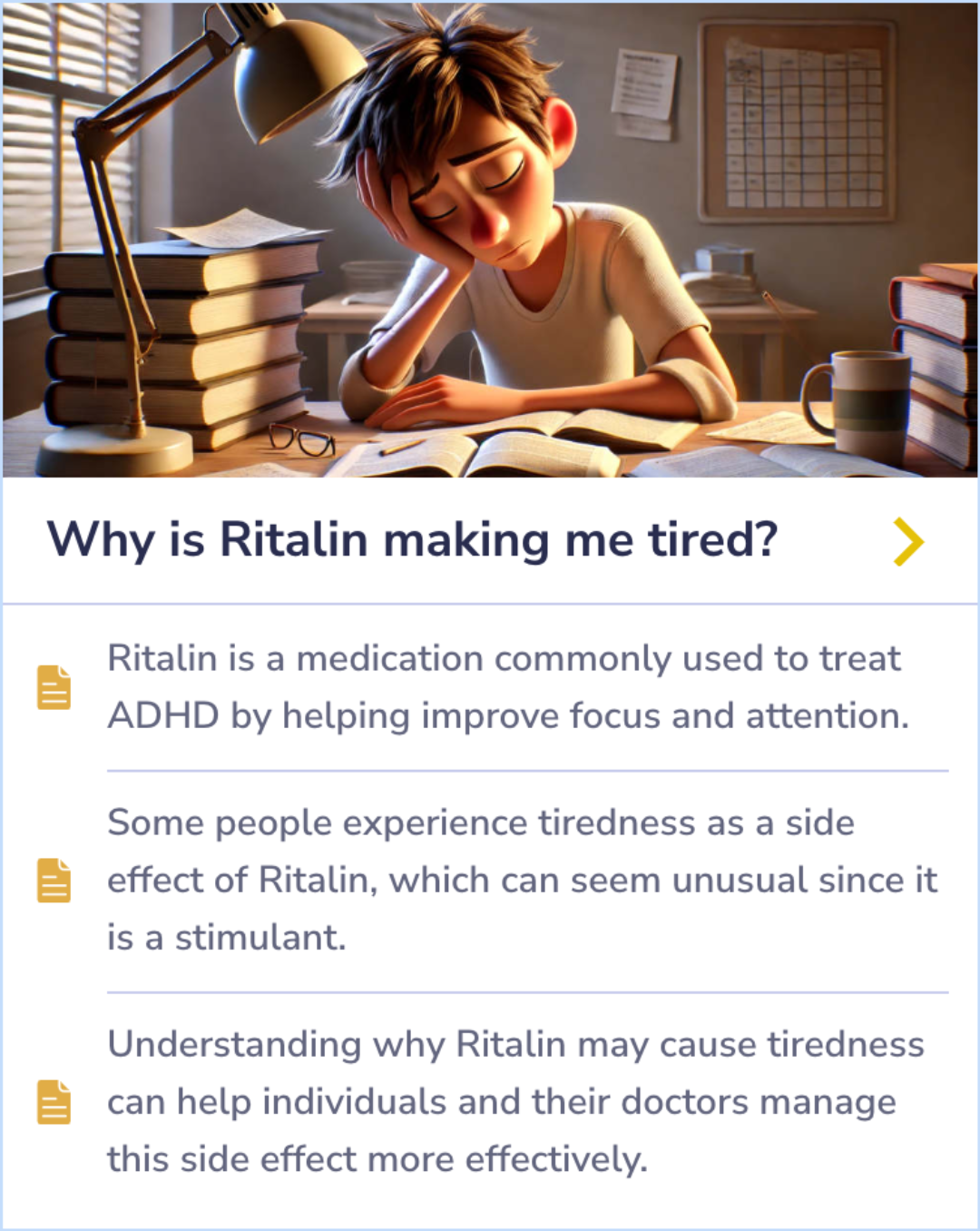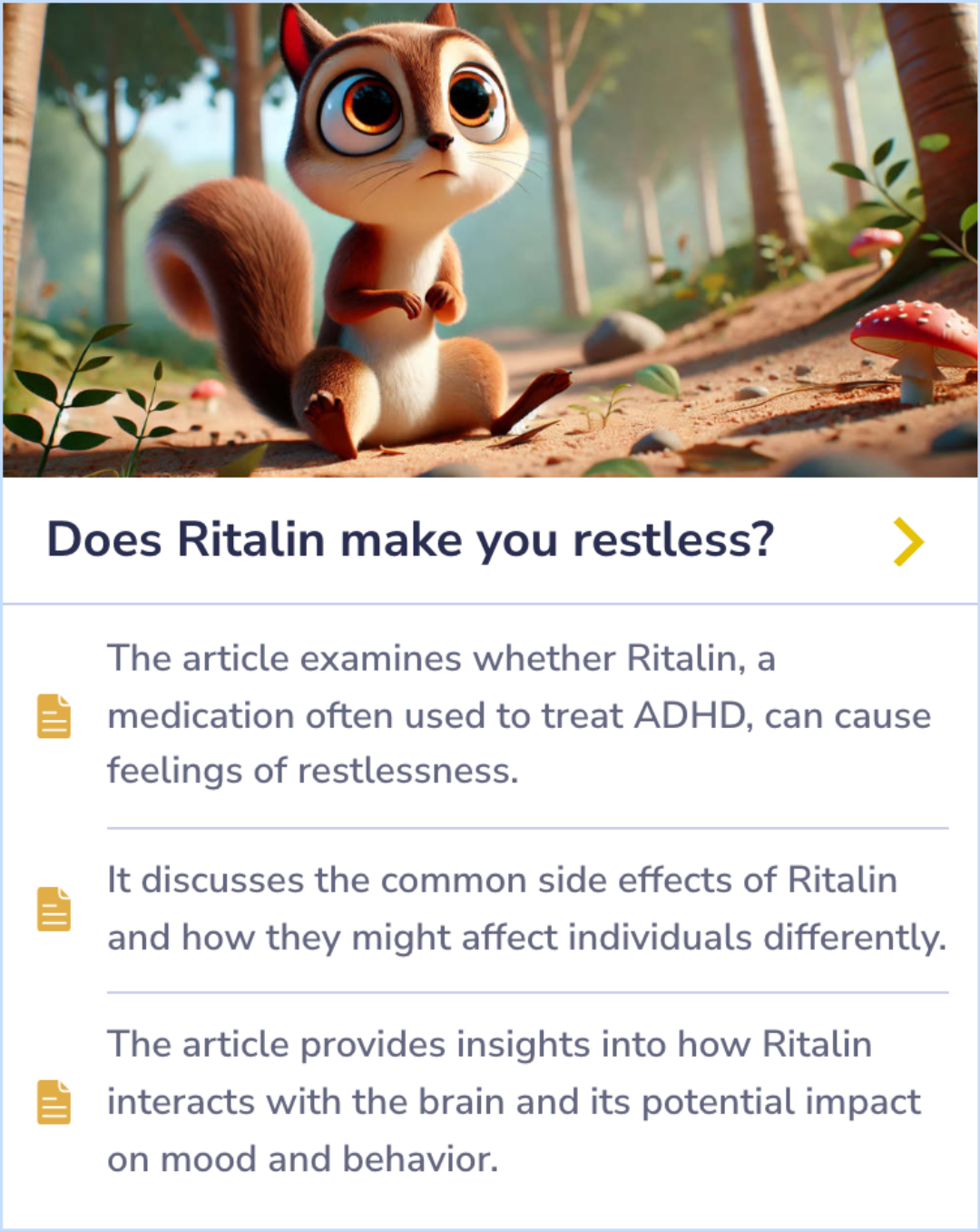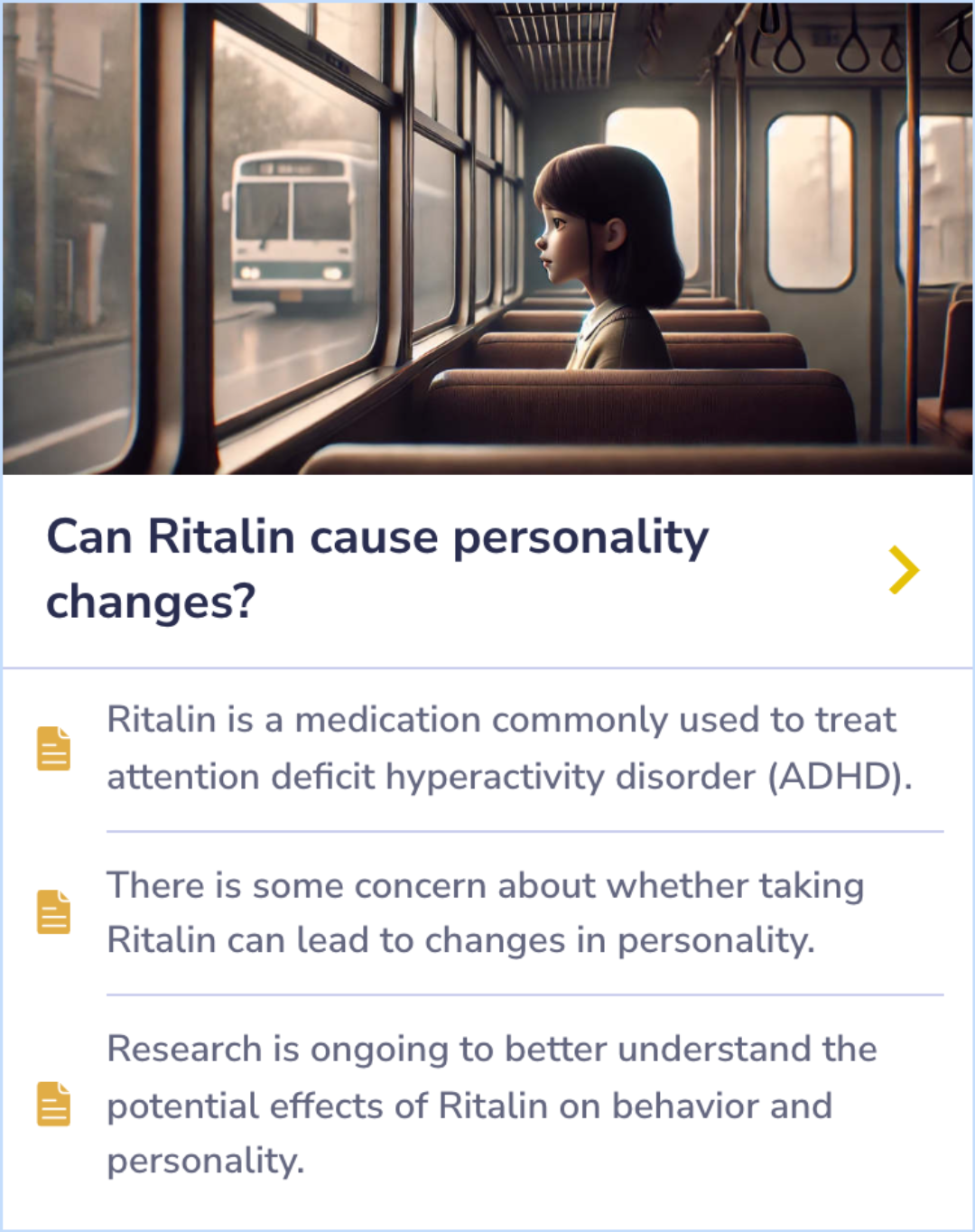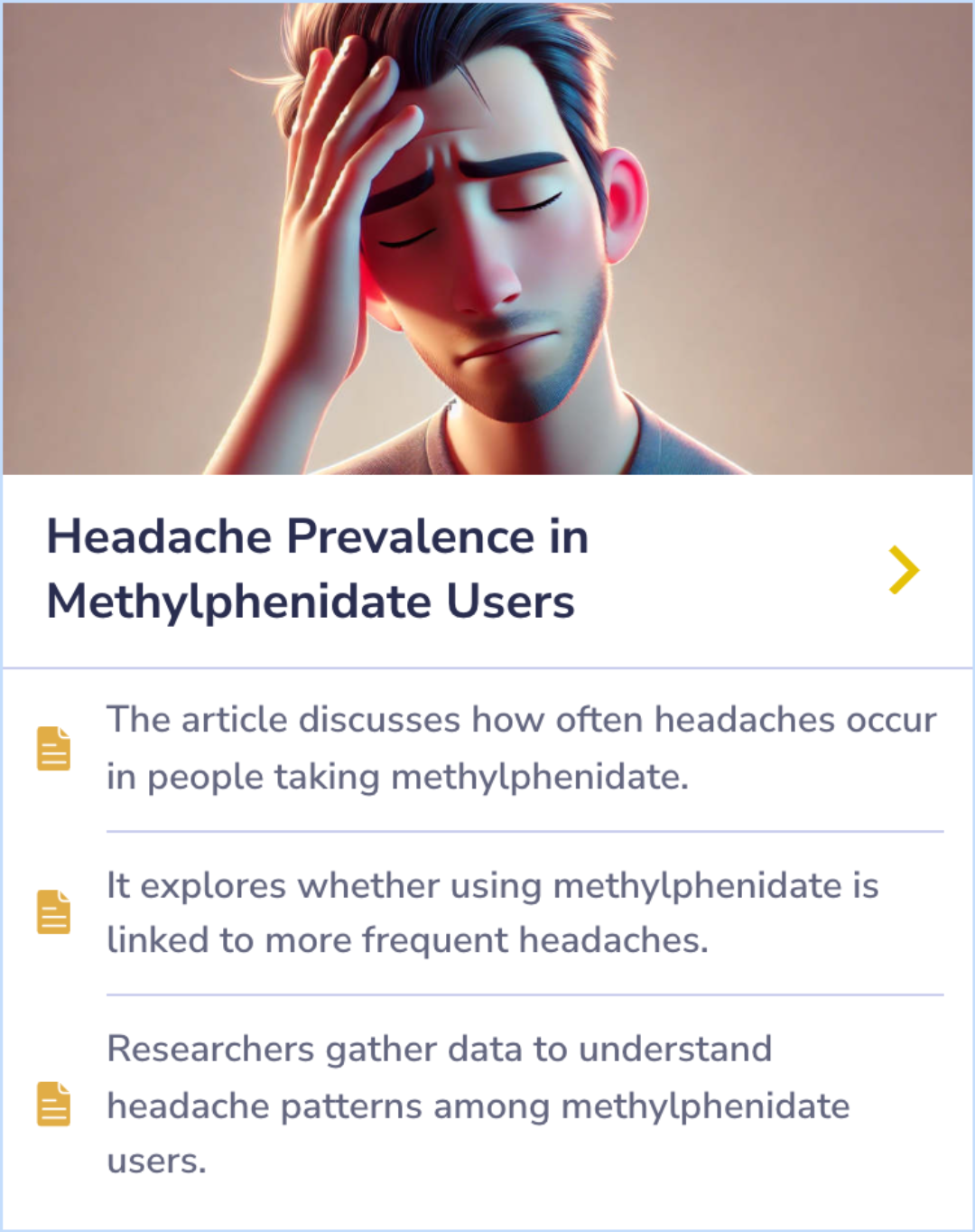Ritalin
Evidence Based Answers
Can Ritalin cause excessive blinking?
Ritalin, used for ADHD, has been linked to abnormal movements like excessive blinking, particularly at higher doses. Tics may decrease with dose adjustments, highlighting the need for tailored treatment plans with a healthcare provider.
Click to explore a section:
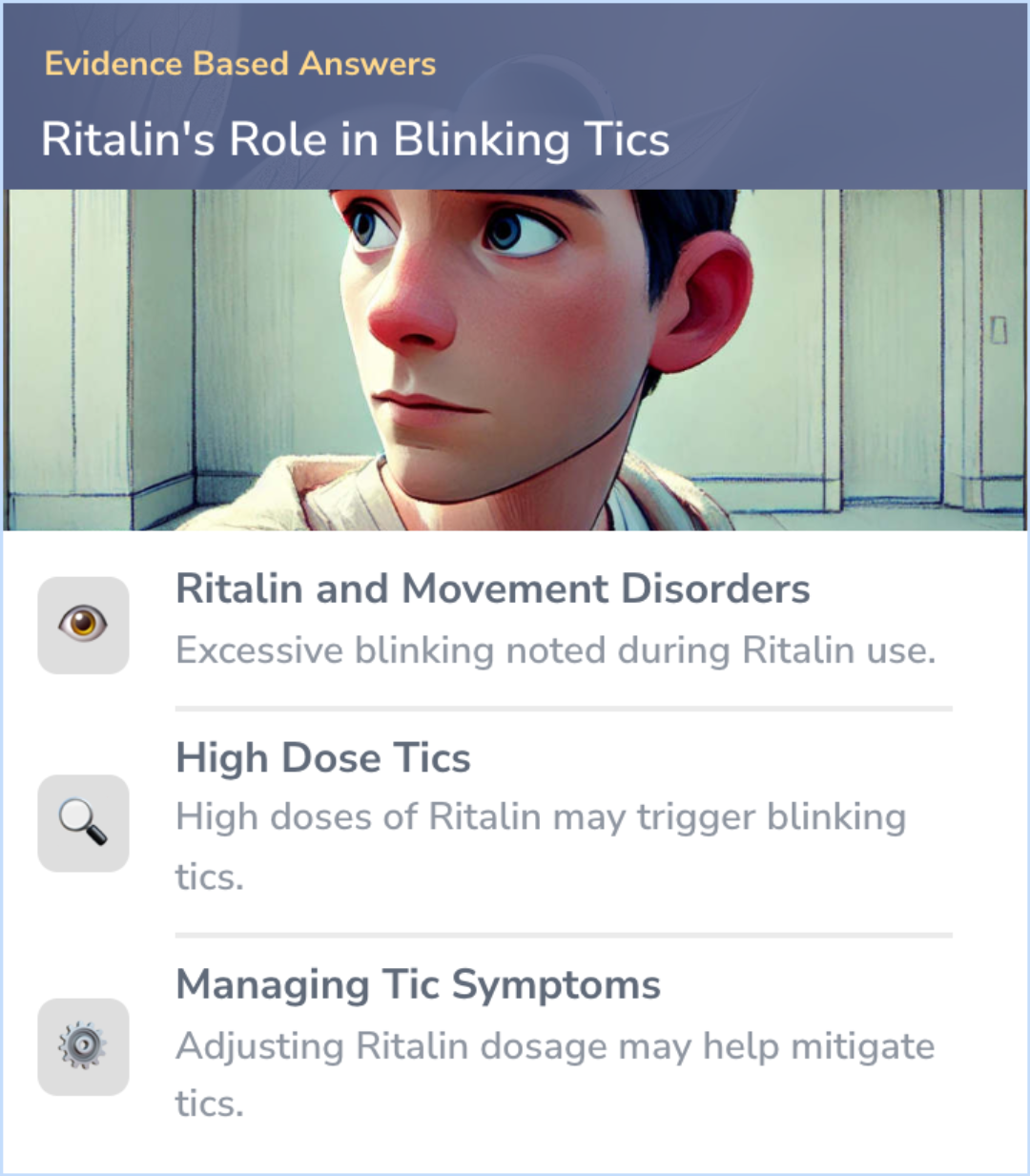
Ritalin may cause excessive blinking, especially at high doses; managing dosage is key.
Personal Experiences
Perspectives: Can Ritalin Cause Excessive Blinking?
When it comes to Ritalin and excessive blinking, experiences vary widely. Some individuals report tic-like behaviors emerging with medication use, while others notice symptom flare-ups only during high stress or when changing doses.
Recommendations often include discussing alternative medications or behavioral strategies, highlighting the complex relationship between ADHD medications, dopamine levels, and tic disorders.
Recommendations often include discussing alternative medications or behavioral strategies, highlighting the complex relationship between ADHD medications, dopamine levels, and tic disorders.
Reddit: u/Alimoon29
i’m experiencing exactly the same as you atm. I saw my psychiatrist... decided to go back to concerta 36 mg... tics won’t stop unless i stop taking concerta, but i wanna try. You’re not alone... started having the same tic... Try having always a fidget toy to play with... it helps me.Ritalin and Movement Disorders
Ritalin (methylphenidate) has been linked to certain types of abnormal movements during treatment, including tics such as excessive blinking of both eyes. Other movements, like tongue thrusting or lip smacking, may also occur, often classified as orofacial tics. These effects indicate a possible neurological reaction to the medication.
Although these tics are less commonly reported compared to other abnormal movements, their occurrence should be noted, particularly at higher doses of Ritalin.
Although these tics are less commonly reported compared to other abnormal movements, their occurrence should be noted, particularly at higher doses of Ritalin.
“
Source Quotes:
Abnormal movements were observed in 27 of these 34 subjects and these included: orofacial (buccal-lingual) movements (such as tongue thrusts, lip smacking, lip licking, lip pursing or lateral movements of the chin).,Bilateral eye blinking, head tossing and grunting were less frequently reported than either buccal-lingual movements or stereotypies, and observed only after high-dose treatment.
Tics and High-Dose Ritalin
Tics, such as excessive blinking, may appear as a side effect of Ritalin, particularly at higher doses. Tics are defined as sudden, repetitive movements or sounds and can be distressing.
While less frequently reported than other abnormal movements, these tics highlight the potential for side effects at higher doses of methylphenidate.
While less frequently reported than other abnormal movements, these tics highlight the potential for side effects at higher doses of methylphenidate.
“
Source Quotes:
Other tics (such as bilateral eye blinking, head jerking or grunting), and tremor, in the form of uncontrolled shaking of body extremities, were also observed.,Bilateral eye blinking, head tossing and grunting were less frequently reported than either buccal-lingual movements or stereotypies, and observed only after high-dose treatment.
Managing Tic Symptoms with Ritalin
Managing tic symptoms like excessive blinking during Ritalin treatment may involve adjusting the medication dose or changing the timing of doses. Lowering the dose has sometimes been shown to reduce the frequency or severity of tics.
Patients should work with their healthcare provider to find the best approach to manage these symptoms, considering possible alternative interventions.
Patients should work with their healthcare provider to find the best approach to manage these symptoms, considering possible alternative interventions.
“
Source Quotes:
Other tics (such as bilateral eye blinking, head jerking or grunting), and tremor, in the form of uncontrolled shaking of body extremities, were also observed.
Key Takeaways
Conclusions
Ritalin, a medication known as methylphenidate, has been associated with the occurrence of certain movement disorders, including excessive blinking and other tics. These effects, particularly noticeable at higher doses, indicate a possible neurological response to the drug.
While not as frequently reported as other movements, understanding the potential for these symptoms allows for better management and treatment options when they arise.
While not as frequently reported as other movements, understanding the potential for these symptoms allows for better management and treatment options when they arise.
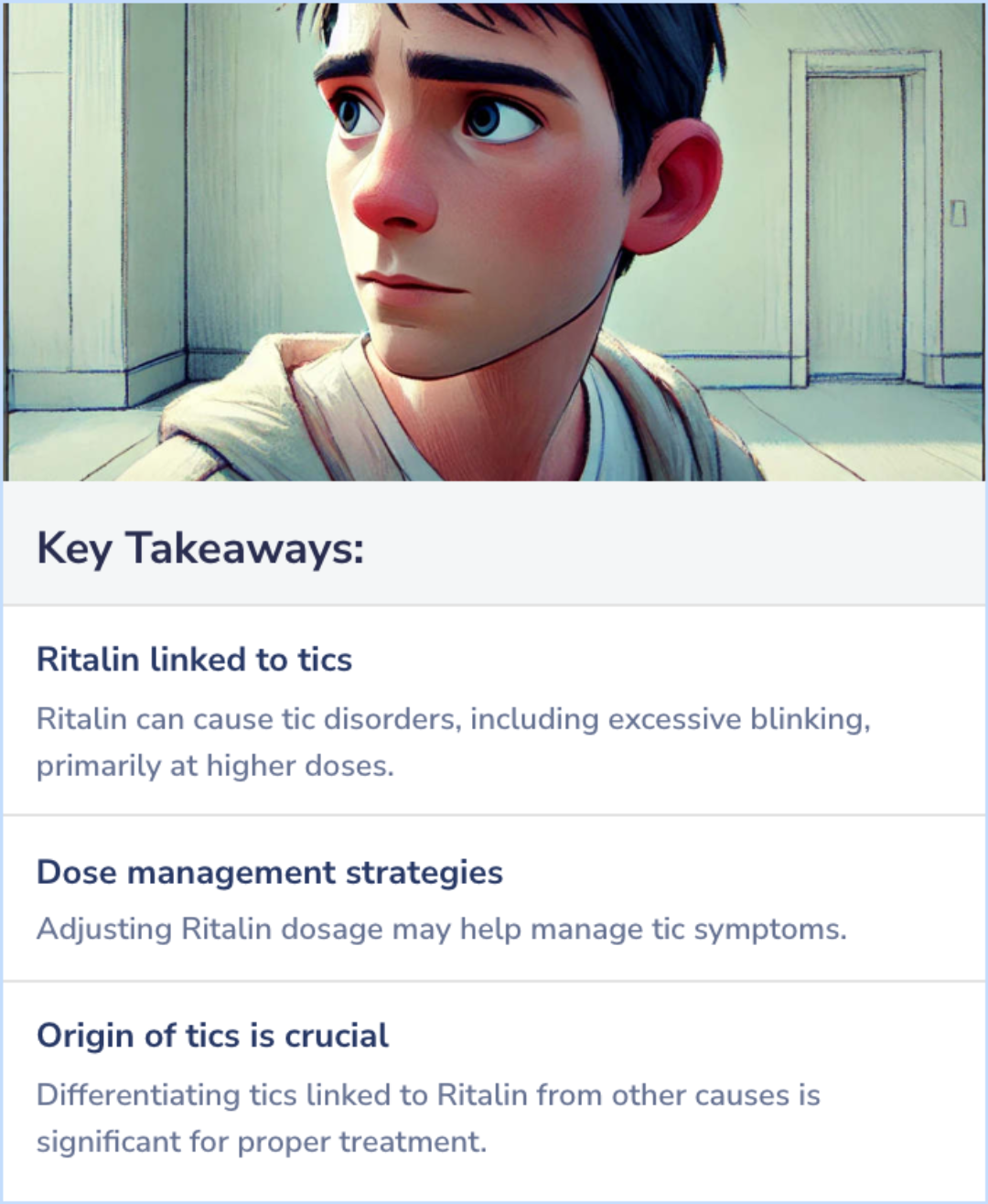
Evidence Summary
Unexpected Tiredness from Ritalin
Ritalin is prescribed to improve focus and attention in individuals with ADHD. Despite being a stimulant, it can lead to unexpected tiredness in some users, a side effect that may seem contradictory to its intended purpose.
While enhancing focus, certain individuals experience fatigue, highlighting the diverse responses to the medication. Exploring this helps patients and healthcare providers navigate daily challenges more effectively.
While enhancing focus, certain individuals experience fatigue, highlighting the diverse responses to the medication. Exploring this helps patients and healthcare providers navigate daily challenges more effectively.
Evidence Summary
Ritalin and Its Effects on Restlessness and Mood
Ritalin, often prescribed for ADHD, can sometimes cause restlessness as a side effect. The drug’s influence varies, with some users experiencing mood shifts and behavioral changes. These differences highlight how Ritalin interacts with the brain in unique ways for each person.
Side effects can range widely, and understanding how these manifest offers a glimpse into how medications like Ritalin shape day-to-day experiences and mood stability for users.
Side effects can range widely, and understanding how these manifest offers a glimpse into how medications like Ritalin shape day-to-day experiences and mood stability for users.
Evidence Summary
Ritalin and Potential Heart Risks
Ritalin, commonly prescribed for ADHD, may affect heart rate and blood pressure, raising concerns about its impact on heart health. Research is ongoing to explore whether these changes could increase the risk of heart-related issues like heart attacks. Studies continue to investigate these possible connections and the broader effects of Ritalin on cardiovascular health.
Experts are closely examining how Ritalin may influence heart function, considering its effects on circulation and the heart's workload.
Experts are closely examining how Ritalin may influence heart function, considering its effects on circulation and the heart's workload.
Evidence Summary
Does Ritalin Influence Personality?
Ritalin, commonly prescribed for ADHD, has been studied for its effects beyond symptom management. Researchers are examining whether it alters aspects of personality or behavior, which raises questions about how it may influence daily interactions and self-perception. While it helps reduce inattention and impulsivity, studies are ongoing to determine if and to what extent it shifts personality traits.
Concerns focus on potential behavioral changes while taking Ritalin, underscoring a need to monitor any noticeable shifts during treatment. Research seeks clarity on how this medication might affect personality in different users.
Concerns focus on potential behavioral changes while taking Ritalin, underscoring a need to monitor any noticeable shifts during treatment. Research seeks clarity on how this medication might affect personality in different users.
Evidence Summary
Examining Headache Frequency with Methylphenidate Use
Methylphenidate use is linked to a closer look at headache occurrences, focusing on how frequently users report this side effect. Researchers aim to see if there's a trend between taking methylphenidate and experiencing more headaches.
Data collected from individuals taking the medication helps build a clearer picture of these patterns, offering insight into headache frequency and its potential connection to methylphenidate use.
Data collected from individuals taking the medication helps build a clearer picture of these patterns, offering insight into headache frequency and its potential connection to methylphenidate use.
